1. Introduction
One of Japan's most popular culture industries, anime or pictures that are put together to let an object move or be animated, has already developed its typical style and process of production. During the second half of the 1900s, Japanese animation was on the rise and, meanwhile, laid the basis for the industry’s later developments. One of the most crucial figures throughout this period is Miyazaki Hayao, whose influence on animation crossed cultural boundaries and is recognized worldwide. Most of his animation films (anime in which a story is told in the form of one feature film instead of multiple episodes) became classics in the Japanese animation industry - for example, My Neighbor Totoro, Spirited Away, Princess Mononoke etc. Miyazaki's movies Spirited away, My Neighbor Totoro, and Laputa also reached extreme popularity and fame in Asia. Until 2020, Spirited Away had kept the box office record in Japan for 19 years.
2. Significance
Miyazaki's influences and popularity are not only restricted to his period; his works strongly affect the whole animation industry nowadays. Similar symbols, plots, character designs, and core ideals of Miyazaki’s anime are easily found in today’s animation films and dramas. Obliviously, it has become a trend for animators to derive concepts and designs from previous animations, and Miyazaki’s works were the most popular prototype to derive from. Thus, to understand the patterns in style, techniques, and core ideals of the animation industry nowadays, “What are Miyazaki’s works?” and “What kind of influences did Miyazaki and his films put onto today’s animation industries?” are worth discussing. After reading multiple articles, and online movie reviews on Miyawaki’s works, I have identified two significant ways Miyawaki has dramatically influenced the Japanese animation industry. On the one hand, the ideals of Miyazaki had introduced, incorporated and rooted within nowadays animations; for instance, feminist and environmentalist ideas, which were new during his period, were portrayed in his movies. However, on the other hand, his storyboard, drawing style and design also impacted anime nowadays strongly; some of his scenes are also praised as classics for new animations to reference and pay tribute to.
3. Concept: Shōjō
To begin with, one of Miyazaki films’ key characteristics that distinguish them from traditional Japanese films was featuring the shōjōs as his protagonists. “Shōjōs” means “young girls,” typically referring to female characters between the age of 12-18. These characters usually have similar characteristics, such as cuteness, beauty, and importance in the stories. As protagonists, they represent the directors’ ideals of women and girls in the audience’s eyes. Before Miyazaki, if the main character had been male, directors generally made shōjōs into an ornament-like characters that subordinated to male characters, eventually losing their values. They often sacrificed themselves to the male protagonist for the latter’s growth or served as lovers. The female protagonist roles, for example, from Gundam 0079 (1979) and Space Battleships Yamato (1974) feature girls that depended upon the male protagonists to be saved. For Moriyuki (female protagonist of Space Battleships Yamato), the whole reason for her to be on the Battleship was so that the male protagonist could protect her. From another perspective, with these shōjōs as the main characters, they are portrayed with similar characteristics such as being “passive, dreamy”, and “ditzy,” all of which were meant to be associated with cuteness (one of the most famous plots in shōjō manga is for the female character to arrive late on the first day of school, which shows her silliness and a corresponding cuteness) [1].
However, as a feminist, Miyazaki’s young female protagonists are distinctive. Unlike the films in the same period, which feature female protagonists that are silly and “cute,” shōjōs in his works are portrayed with more “independent,” “idealized” and “fatalistic” natures [1]. In Kiki’s Delivery Services, Kiki, as a typical Miyazaki-style shōjō, successfully had her growth throughout the movie. The film was about Kiki travelling worldwide and searching for a job individually. By travelling, she understood more about life, her future, ways of communication and money-making. She was courageous when she experienced unequal treatment and tactful whenever she encountered troubles with her jobs. All of these characteristics existed only in male characters before. By putting them on Kiki, his female protagonist, Miyazaki, revolutionised Japan's coming-of-age stories. His innovations in the female protagonists’ personalities later influenced a lot of other animated films.
After Miyazaki found a new path for shōjō characters, the animation industry quickly spread these ideals. By Kiki’s Delivery Service, not only has he led to the production of multiple films incorporating his thoughts about a female character, but he also successfully created popular icons like “maho shōjōs”, which stands for “magic girls” in English, by the charisma of Kiki in Kiki’s Delivery service [2]. His influences on female character designs mainly include the nature of girls and personality designs for them. As mentioned before, Miyazaki’s shōjōs are almost always characterized by “autonomy, competence etc.” which had mostly been boy’s characteristics before. An example would be Hina in Weathering with You (2019), an animation film directed by Shinkai Makoto. The shōjō protagonist Hina has many characteristics similar to Miyazaki's protagonists. For example, the traits of independence and discussion about adolescence growth in understandings of life. Like Kiki's Delivery Service, the female character, Hina, was fighting her way through financial shortage when she experienced the need to become independent. In addition to these individual skills, Hina also shows an idealistic characteristic when she sacrifices herself for the good of other people, which is also a typical god-like action (being a saviour) that could be seen performed by Miyazaki protagonists.
Furthermore, Hina is also portrayed as a typical maho shōjō. She can change the weather, a unrealistic magical power in real life. This fantasized female character manifested multiple quintessential characteristics of Miyazaki’s protagonists and is one example of the many works that owe their inspiration to Miyazaki’s films.
4. Concept: Nature
Not only did Miyazaki have a unique set of ethics regarding his female characters, but he also blended in his ideals about the nature. Miyazaki believes that humans mainly pollute the environment, and the belief that nature will revise every wrong committed by humans is nonsense [3]. Relating to Miyazaki's period, Japan was prospering and flourishing in its economy after the 1960s Tokyo Olympics. However, the drawback of this rapid development of industrialized industries was severe pollution of the country’s environment. Because of the condition at the time, Miyazaki developed a keen interest in environmentalism and portrayed environmentalist ideals in his works. In his movie, he wanted to show the “essence of life”, which, in other words, means nature [3]. For example, his movie My Neighbor Totoro’s setting was in the countryside - near nature, far from modern city. In this film, Miyazaki used his drawing abilities and conscientious efforts on the most minor nature-related details in the background. Although the audience might not even notice the details, the film still reminded the audiences about the “large nature space and deeper forces” of nature by showing these “‘everyday’ mundane pleasures” through the background details [4].
Another example that showcases his environmentalism ideals would be Nausicaä. The 1984 film portrayed a world that Miyazaki was intensely concerned that our world will turn into if we continue to develop our economy at the expense of our natural resources. In this film, the main female character, Nausicaä sees “natural processes themselves as equally important” as her tribe’s political and social concerns [4]. In this perspective, Miyazaki is using Nausicaä to express and spread his thoughts about nature. Besides, symbols also reflected nowadays environment and Miyazaki’s understanding of it. For instance, the huge tree in My Neighbor Totoro showed a “protective” and “sheltering quality” which is representative of the power of nature in real life [5].
Additionally, adding the trees’ perspectives into the animation also made the trees more spiritualized and more humanized. Similarly, Mei and Satsuki’s “dreams” symbolized the “growth and renewal of nature.” These symbols point to Miyazaki’s ethical stress on the importance of protecting and respecting the nature.
More than just symbols, Miyazaki’s choice of genres and subjects for his movies also revealed his environmentalist ideals. Before Miyazaki, anime often chooses to portray stories in genres such as romance and action. To take Sailor Moon as an example, it is the most typical traditional Japanese anime genre during that period. This anime includes romance, fighting scenes, and magical elements (similar to those featuring maho shōjōs). However, although undoubtably famous in Japan, Sailor Moon did not include any deeper explorations on bigger problems of the society or reflect any concerns about the real world. Unlike Miyazaki, the producers simply made up the plots for their audiences, usually by locating the events inside the protagonists’ dreams (eg. Shōjō manga and anime). However, Miyazaki successfully found a balance between his own ideas on nature and what the audiences wanted to see. My Neighbor Totoro, Spirited Away, Princess Mononoke etc. are all examples of his successful incorporation of his ideals into the popular genres. My Neighbor Totoro blended the importance of nature with elements such as nostalgia, fantasy, and family relationships. The story’s is set in Mei and Satsuki’s furusato, which means “hometown” but also has a nostalgic resonance in the Japanese language, is a proof of his tactful combination of his message with people’s sympathy. Laputa mixed steam punk with reflections on industrialized societies. Princess Mononoke and Nausicaä focused their subjects on understanding the conflict between nature and social and political concerns. Spirited Away used the form of animism and Shinto culture with a stress on nature in the plot. Although all of these would have been odd moves during Miyazaki's period, his works eventually gained popularity and brought profit to the production company. Nowadays, people still analyze his works, especially the choices he made in the movies to deliver his messages.
Furthermore, these Miyazaki-typed genres influenced future animation industries too. For instance, Nadia: The Secret of the Blue Water (1990) is a typical Miyazaki style animation. Nadia was adopted from a classic, Twenty Thousand Leagues Under the Sea, and produced by NHK (Japan Broadcasting Corporation, Nippon Hōsō Kyokai). This anime's main subjects are similar to My Neighbour Totoro's. McAllister said this animation was required to be “rendered with Miyazaki's taste” [6]. The steam punk style for Nadia is similar to that of Laputa. The flying machines and a mysterious stone are also elements seen in Laputa. The director of this movie Anno Hideaki was one of Miyazaki’s students and was undoubtably impacted by Miyazaki’s ideals. Another example of genre influence is the Children Who Chase Lost Voices from Deep Below (2011) directed by Shinka Makoto. This movie utilized similar elements to those in Miyazaki films such as Princess Mononoke. For example, relics and the setting of traditional local Japanese tribes rather than Japanese modern society in Children Who Chase Lost Voices from Deep Below are reminiscent of Princess Mononoke’s settings and tribes.
The discussion of the main protagonist's family also reminds people of Miyazaki’s family relationship themes in films such as Totoro. Furthermore, this movie also encourages people to care for the environment. Even though there are minor differences such as Shinka delivering the main messages of the film to the audience straightly through the character’s scripts, instead of implying at the message in the background as Miyazaki often does, Children Who Chase Lost Voices from Deep Below still showed his tributes and reference to Miyazaki’s works.
5. Techniques: Frames and Story Boards in Animation
In addition to metaphysical ideals, Miyazaki’s frames are also enjoyable to see and have been mimicked by many animators after him. A particular style of drawing mostly characterizes his films. Besides giving the audiences a feeling of “freshness and romance” by a delicate, detailed, and cute style, his arts also keep the traditional hand drawn style while others had started to embrace the age of graphic drawings [7]. In addition to the style, his storyboards are also a pleasure. His storyboards and camera use tell stories in ways that appeal to the audiences’ feelings. Besides, he successfully created a good pace for the audiences to digest the information provided in the story. He also used objects in the backgrounds to help the audience understand the films’ worldview more clearly.
Nevertheless, this is only one example, My Neighbor Totoro also includes many typical Miyazaki storyboards. Figure 1 shows use in “foreground in order to show the depth in this scene” [8]: the books were piled up (first layer), Father reading (second layer), the house’s pillars (third layer), Mei in playing (fourth layer), and the forest and the sky at the end. Mary and the Witches Flower also referenced this typical style. Figure 2 also utilized Miyazaki's techniques in his movies (using objects to layer up the scene). In addition to this storyboard, his compositions also impacted a lot of animation films. For instance, in Big Fish and Begonia (2016), there is a scene where they paid tribute to Totoro. The actions and the angle of these two monsters are identical, and the umbrella’s setting, which is used to fly, the same. Object use and the complexity thus created in particular frames of these movies all showed Miyazaki’s influences.
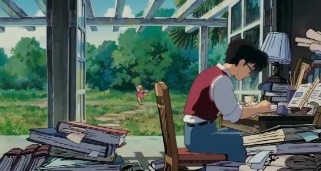
Figure 1 - My Neighbor Totoro
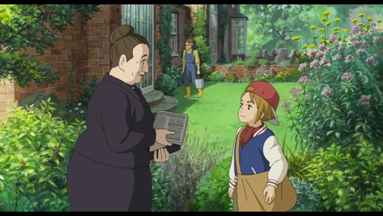
Figure 2 - Mary and the Witches Flower
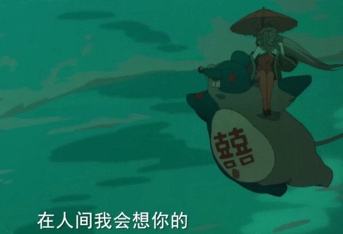
Figure 3 - Grandma Rats in Big Fish and Begonia
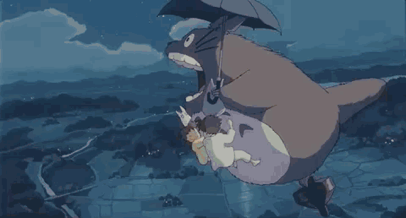
Figure 4 - Totoro Flying in Mei and Satsuki's dream
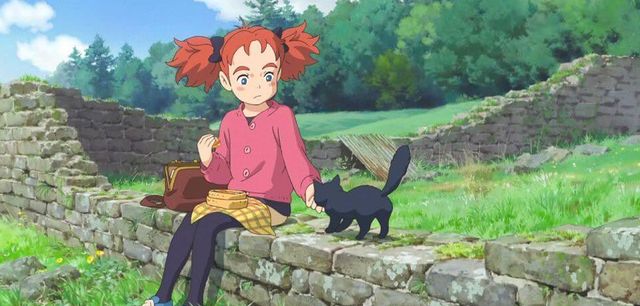
Figure 5 – Mary in Mary and the Witch’s flower
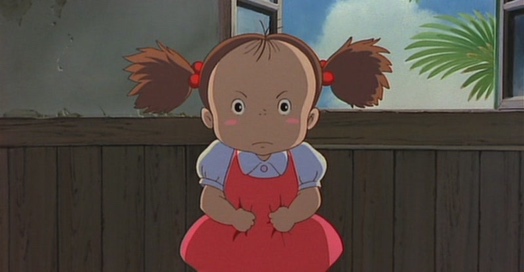
Figure 6 - Mei in My Neighbor Totoro
6. Techniques: Character Design
Besides the story board, Miyazaki's character designs also impacted many animation movies. Mary and the Witches Flower serves as an example. In the film, the protagonist Mary’s looks show similarities to Mei’s, one of the protagonists of My Neighbor Totoro. As Figure 5 shows, Mary’s hairstyle and the rouge on her face resemble Mei's. In addition, both characters have a high double ponytail tied up by a decorative thing. Among all these, the rouge is rare in regular animations and thus proves the influences of Miyazaki’s works. One further proof of Miyazaki’s works is that the director of Mary and the Witches Flower, Yonebayashi Hiromasa, expressed his thankfulness to his teacher Miyazaki's teachings and advice. At the same time, he made the animation during the film showing at Shanghai [9]. Other characters like Whisper of the Heart are similar to Setsuki in Totoro. Therefore, Miyazaki’s influence in character design is also vital in the animations industry.
7. Limitations
Admittedly, this research still has a lot of limitations. To begin with, sources and references are mainly in Chinese and English, thus providing opinions only in the Chinese and Western perspectives and limiting the understanding of what the Japanese scholars thought of Miyazaki’s works. Japan, the birth country of Miyazaki and his films, may have clearer and more definite interpretations of his works due to the relatively small cultural differences between the film and the criticizers. Another problem is that all articles researched present only praises to Miyazaki’s works, while a more thorough understanding of the historical context would require consideration of words of criticism. Without the critics, the research lost a vital perspective to truly comprehend the symbols, frames, scripts, and characters he created. Further into understanding theses Miyazaki films, understanding the movie’s scripts and plot design is necessary. However, this research mainly focused on the purpose of the movie the appeals to present these ideas. Thirdly, this research also includes some movie comments online, which are less reliable sources than academic writing. In the academic perspective, sources such as online comments lack in rigor, precision and objectiveness. For instance, the definition of “copying” and “influence” are not clear in these comments, and sometimes it’s hard to differentiate “being influenced by” from “copying” Miyazaki’s works.
8. Conclusion
The animation industries have been influenced by Miyazaki’s works in two major aspects: messages on feminist and environmentalist ideals and visual techniques used to express these messages. Miyazaki showcased these two characteristics in every film that made using different ways. Influenced by Miyazaki, many new animations nowadays use and popularized his quintessential shōjō characters humanistic ideals. Accompanying the influential messages, Miyazaki’s way of drawing is also absorbed and digested by many animators in the animation industry. For example, character designs and storyboards are the most influential in the techniques. Young animators also refer to his way of putting different objects around to show depth. Young animators are the future of the animation industry, and they grew up learning about Miyazaki’s works. Therefore, understanding Miyazaki’s key characteristics and their influences is a way to study and make predictions about the upcoming trends in the animation industry.
References
[1]. Napier, Susan. Anime from Akira to Princess Mononoke. San Fransico: Palgrave Macmillan,2001
[2]. Jacobson, Mathew. “The Wondering Adolescent of Contemporary Japanese Anime and Videogames”, (2014), Queen Mary University of London
[3]. Hayao Miyazaki et al., Starting Point: 1979-1996, San Francisco: VIZ Media LCC, 2014
[4]. Gossin, Pamela. “Animated Nature: Aesthetics, Ethics, and Empathy in Miyazaki Hayao's Ecophilosophy,” Mechademia: Second Arc Vol. 10, (2015): p. 209-234
[5]. Robbie McAllister, “Twenty Thousand Leagues East: Around the World with Nadia: The Secret of Blue Water,” Science Fiction Studies, Vol. 48, No. 1, (March 2021): p. 46- 61
[6]. Yixiangshijiedetiankong“Characteristics of Miyazaki’s works”, Sohu, Accessed August 3, 2021, https://www.sohu.com/a/119073615_130661
[7]. FenJingTianDi, ”Totoro: When the girl meets the cat – Miyazaki’s Story boards”, December, 11, 2018. video, 10:07. https://www.bilibili.com/video/BV1rt411q7YE
[8]. Meng, Tinghu, “Film Showing of Mary and the Witch’s Flower”, Tencent Enterntainment, Accessed July 30, 2021. https://ent.qq.com/a/20180422/009822.htm
[9]. Jinchengwaibaisensen“Big Fish and Begonia? The production team is definitely fan of Miyazaki Hayao”, Accessed August 3, 2021.
Cite this article
Su,W. (2023). Miyazaki Hayao: Influences on the Asian Animation Industry. Communications in Humanities Research,3,324-330.
Data availability
The datasets used and/or analyzed during the current study will be available from the authors upon reasonable request.
Disclaimer/Publisher's Note
The statements, opinions and data contained in all publications are solely those of the individual author(s) and contributor(s) and not of EWA Publishing and/or the editor(s). EWA Publishing and/or the editor(s) disclaim responsibility for any injury to people or property resulting from any ideas, methods, instructions or products referred to in the content.
About volume
Volume title: Proceedings of the International Conference on Interdisciplinary Humanities and Communication Studies (ICIHCS 2022), Part 1
© 2024 by the author(s). Licensee EWA Publishing, Oxford, UK. This article is an open access article distributed under the terms and
conditions of the Creative Commons Attribution (CC BY) license. Authors who
publish this series agree to the following terms:
1. Authors retain copyright and grant the series right of first publication with the work simultaneously licensed under a Creative Commons
Attribution License that allows others to share the work with an acknowledgment of the work's authorship and initial publication in this
series.
2. Authors are able to enter into separate, additional contractual arrangements for the non-exclusive distribution of the series's published
version of the work (e.g., post it to an institutional repository or publish it in a book), with an acknowledgment of its initial
publication in this series.
3. Authors are permitted and encouraged to post their work online (e.g., in institutional repositories or on their website) prior to and
during the submission process, as it can lead to productive exchanges, as well as earlier and greater citation of published work (See
Open access policy for details).
References
[1]. Napier, Susan. Anime from Akira to Princess Mononoke. San Fransico: Palgrave Macmillan,2001
[2]. Jacobson, Mathew. “The Wondering Adolescent of Contemporary Japanese Anime and Videogames”, (2014), Queen Mary University of London
[3]. Hayao Miyazaki et al., Starting Point: 1979-1996, San Francisco: VIZ Media LCC, 2014
[4]. Gossin, Pamela. “Animated Nature: Aesthetics, Ethics, and Empathy in Miyazaki Hayao's Ecophilosophy,” Mechademia: Second Arc Vol. 10, (2015): p. 209-234
[5]. Robbie McAllister, “Twenty Thousand Leagues East: Around the World with Nadia: The Secret of Blue Water,” Science Fiction Studies, Vol. 48, No. 1, (March 2021): p. 46- 61
[6]. Yixiangshijiedetiankong“Characteristics of Miyazaki’s works”, Sohu, Accessed August 3, 2021, https://www.sohu.com/a/119073615_130661
[7]. FenJingTianDi, ”Totoro: When the girl meets the cat – Miyazaki’s Story boards”, December, 11, 2018. video, 10:07. https://www.bilibili.com/video/BV1rt411q7YE
[8]. Meng, Tinghu, “Film Showing of Mary and the Witch’s Flower”, Tencent Enterntainment, Accessed July 30, 2021. https://ent.qq.com/a/20180422/009822.htm
[9]. Jinchengwaibaisensen“Big Fish and Begonia? The production team is definitely fan of Miyazaki Hayao”, Accessed August 3, 2021.









